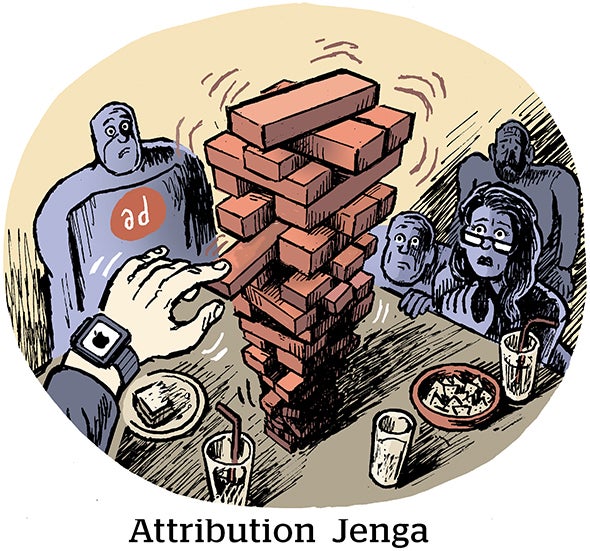The panel discussion on click fraud and click auditing, a tradition at Search Engine Strategies conferences, got a little less conventional during the current San Jose meeting when Google disclosed that it had posted to the Web an internal report detailing flaws in the ways many click audit firms count page clicks — without sharing the report with other panelists.
The announcement added some turmoil to what was otherwise expected to be a more placid meeting on fraud than in past SES conferences. With a Google settlement approved in the Lane’s Gifts click fraud class action suit and preliminary approval of a Yahoo! settlement in another click-fraud class action in California, and with last week’s announcement that the big search engines would join a working group assembled by the Interactive Advertising Bureau to define click fraud and set guidelines for combating it, the timing seemed right for a cordial discussion of where the search industry should turn next in its efforts to reduce bogus ad clicks.
But that cordial air cooled considerably when Shuman Ghosemajumder, Google’s business product manager for trust and safety, announced that his company had just completed a 17-page study detailing what he termed flaws in the way some third-party click auditing firms compile data in assembling click-fraud refund requests for their marketer customers.
Ghosemajumder said the report, authored by the company’s click quality team and published on several Google-related blogs yesterday morning at about the time of the panel discussion, outlined “some pervasive and reproducible problems in the methodology used by third-party click fraud auditing firms which have consistently inflated their estimates of how many clicks are actually being marked as fraudulent.”
According to the report, those flawed methods include counting visits to a Web page rather than counting the actual clicks on an ad on that page. As a result, the Google report says, these consultants often wind up counting page reloads, back-button hits and subsequent visits to an advertiser’s site as multiple clicks on that marketer’s Google ad. “A single legitimate click has, through the use of this methodology, resulted in the detection of five fraudulent clicks,” Ghosemajumder said.
The report also points to some third-party click auditors’ reliance on software cookies to track user activity across the network of sites run by their customers. According to Google, this can sometimes combine ad clicks across different ad networks, so that clicks on a Google ad get counted against Yahoo! and vice versa.
Pressed by moderator Jeff Rohr of search marketing firm Optiem LLC to say whether Google thought these errors were accidental or intentional, Ghosemajumder refused to characterize auditors’ intentions. “We’re not making any judgment on what the internal dynamics have been,” he said. But he added that mixing clicks across ad networks have in some cases resulted in fraud claims by advertisers of more than 100%.
“If you looked at this information, it would be strikingly obvious that there was something very, very flawed in the methodology being used to collect these numbers,” he said. “And we think the same. We don’t know why these basic sanity checks have not occurred on the part of the third-party audit firms. We don’t know why these numbers are inflated to such an extent that even the most basic check against an advertiser’s own data would verify that more clicks are being counted by these firms than even occurred for that advertiser.”
The last seven pages of the Google report are an appendix featuring detailed analysis of the flaws Google has identified in the click-fraud reports sent to them by three click-audit firms: ClickFacts, Click Forensics and AdWatcher. Google said that all the reports cited overstate the fraud problem for their clients by including these fictitious clicks.
Tom Cuthbert, president and CEO of Click Forensics, was part of the panel discussion yesterday. He declined to discuss the Google findings before reading the report, but said it was “pretty cool” that the document included an examination of some click-fraud reports produced by his company and would read the report.
But Lori Weiman, director of KeywordMax, a search marketing firm that provides click-audit services for its clients, voiced the group’s irritation at being ambushed by the Google report. “it would have been really nice if you’d shared that with us in advance of this event,” she told Ghosemajumder. “We could have been more thoughtful in our response.”
Ghosemajumder replied that Google had shared findings of this type with advertisers and auditors in the past and been told that third-party auditors’ reporting methods were simply different. “We want to be able to call attention to this so that advertisers can take action to protect themselves as well,” he said. He said the Google report identified steps auditors could take to eliminate overcounting of clicks from page reloads and added that he was “surprised” these measures hadn’t already been taken.
“Let’s agree that you and I are never going to agree on your methodology versus mine,” Cuthbert told Ghosemajumder. “But we should agree on what we do at the end of the month. You take this data from me; as the contractual final arbiters you guys decide which clicks are valid and which are not; you pass that information back, and let’s move on. We built that system and made it available, and we’re eager to move forward.”
Cuthbert pointed out that his firm had mounted a microsite to encourage search marketers who suspect fraud to join its Click Fraud Network. The site is named www.ReasonableIsNotEnough.com”, an allusion to the finding of a recent independent report that Google’s click-fraud detection efforts were “reasonable” given the limits of the pay-per-click model.
John Slade, senior director of global product management for Yahoo! Search Marketing, said that debating differences of methodology was “comparing apples not to apples but to Buicks”.
“Methodologies vary, because it’s a complicated problem and you’ve got different people trying to do the right thing,” he said. He placed his greatest hope in as the efforts by the IAB working group to come up with standard definitions of click fraud and guidelines for
counting bogus clicks.



